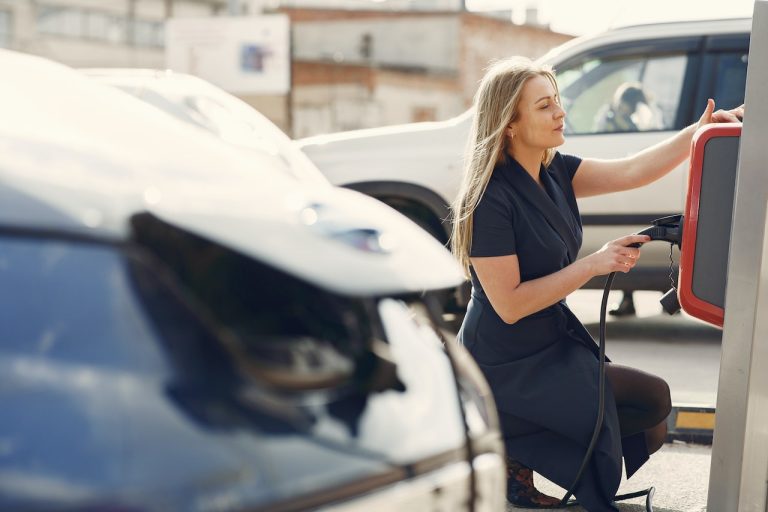The precipitous rise in gas prices over the past few weeks has spurred even more interest in electric vehicles (EVs). Carmakers have gotten the message and have been making pledges to transition their vehicles to predominantly EVs over the coming decades. For example, GM aims to produce only EVs by 2035 and Ford announced last fall it is investing $11.4 billion in two manufacturing sites in order to produce more EVs. That investment is expected to create 11,000 jobs and allow Ford to generate at least 40% of their global vehicle sales from EVs by 2030.
Recent legislation has allocated billions specifically for EV infrastructure, further incentivizing society to lean into EVs. So what does all this mean for journalists? It means that in one way or another the impact of EVs is likely to come across your beat. Whether you cover transportation, labor, energy, politics, retail or even real estate, EVs will likely be involved in your coverage over the coming years. Here are some things journalists should know about EVs.
Make sure you know what you mean when you say EV
AP Stylebook recently updated the entries in their guidebook for electric vehicles. The stylebook defines three types: battery-electric vehicles, hybrid vehicles, and plug-in hybrid vehicles. The stylebook is clear that hybrid and plug-in hybrid vehicles should not be referred to as mere electric vehicles as these are not solely powered by batteries linked to an electric motor.
The update noted that EV is acceptable to use on second reference to vehicles that run only on electricity and have no internal combustion engine, but HEV and PHEV should not be used on second reference for hybrids and plug-in hybrids. As this industry progresses, make sure to regularly check in with the AP Stylebook to ensure your writing comes off the way you intend it to.
Understanding the complexities of an evolving industry and the volume of impact
Interest in purchasing electric cars has certainly seen an uptick these past few years, but the industry has some serious investing to do to be able to get to the place it wants to be – starting with the number of electric charging stations available, which is a third of the amount of current gas stations (approximately 46,000 compared to 150,000).
The idea of increasing the number of stations seems easy, but that involves a lot of infrastructure changes to ensure the electricity being pulled from the grid is sustainable, which can be a costly project that impacts more than the bottom line. There are concerns that our reliance on fossil fuels for ‘grey power plants’ reduces the effectiveness of EVs and therefore more infrastructure needs to be in place for providing renewable energy to the grid.
Another factor is that not all charging stations are equal in their capacities. There are three levels of charging that range in the cost and time it takes to fully charge your EV. The Tesla Supercharger, with the capacity to recharge up to 200 miles in 15 min, is currently limited to use by Teslas, incentivizing consumers to purchase the brand. This could change with time as programs, such as the one in the Netherlands, aim to open up the network to other EVs.
Developing new infrastructure involves a lot of people, from those that are building the structure to those that are impacted by it. For new angles on this story mix up who you talk to: politicians nationally and locally, manufacturers, utility companies and customers, construction workers, advocacy groups, gas stations, land owners, car makers and sellers and EV purchasers and owner groups.
With new technology, something has to give
Even with public approval, getting new projects completed that favor a shift to electric vehicles is likely to receive pushback from the businesses most hurt by the EV industry: gas and oil companies. Reporting on how these businesses are reacting and responding to the changes is just as important as reporting on the evolving industry itself.
Last week, Vox published an article about the death of the gas station. In it, the author outlined the various scenarios gas stations have for moving forward. One of the potential pivots for gas stations is to install electric charging stations to replace gas pumps, but the potential profit might not be enough to justify the cost of conversion. Gas stations will also face intense competition from more convenient locations to charge cars such as hotels, malls, and restaurants. This is just one aspect journalists can look into.
Resources
If you are researching EVs be sure to check out The International Energy Agency, the U.S. Department of Energy, and the U.S. Environmental Protection Agency. Utilizing these sources can help you make a thorough report on the EV industry.







